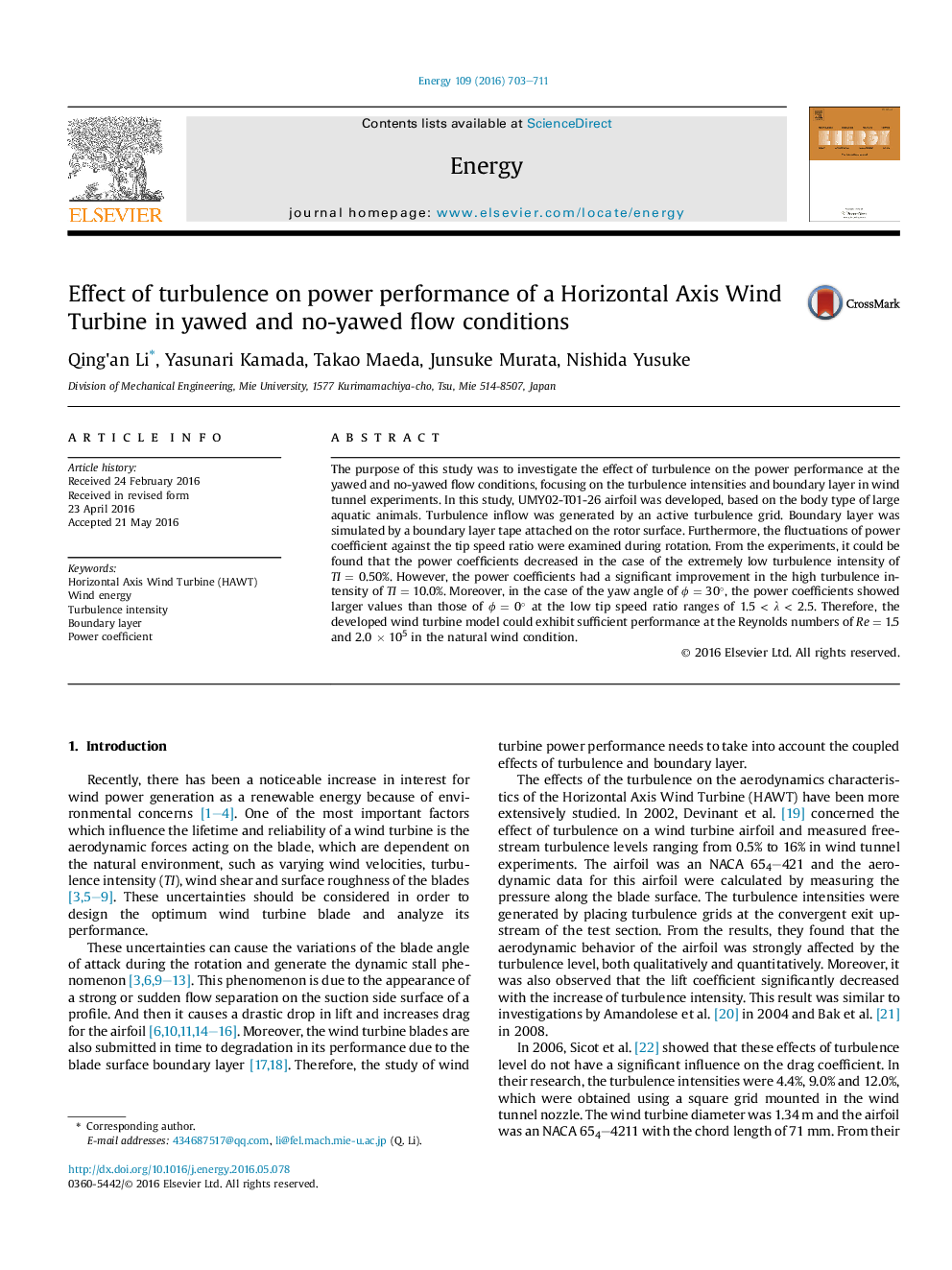| Article ID | Journal | Published Year | Pages | File Type |
|---|---|---|---|---|
| 8073587 | Energy | 2016 | 9 Pages |
Abstract
The purpose of this study was to investigate the effect of turbulence on the power performance at the yawed and no-yawed flow conditions, focusing on the turbulence intensities and boundary layer in wind tunnel experiments. In this study, UMY02-T01-26 airfoil was developed, based on the body type of large aquatic animals. Turbulence inflow was generated by an active turbulence grid. Boundary layer was simulated by a boundary layer tape attached on the rotor surface. Furthermore, the fluctuations of power coefficient against the tip speed ratio were examined during rotation. From the experiments, it could be found that the power coefficients decreased in the case of the extremely low turbulence intensity of TI = 0.50%. However, the power coefficients had a significant improvement in the high turbulence intensity of TI = 10.0%. Moreover, in the case of the yaw angle of Ï = 30°, the power coefficients showed larger values than those of Ï = 0° at the low tip speed ratio ranges of 1.5 < λ < 2.5. Therefore, the developed wind turbine model could exhibit sufficient performance at the Reynolds numbers of Re = 1.5 and 2.0 Ã 105 in the natural wind condition.
Keywords
Related Topics
Physical Sciences and Engineering
Energy
Energy (General)
Authors
Qing'an Li, Yasunari Kamada, Takao Maeda, Junsuke Murata, Nishida Yusuke,
